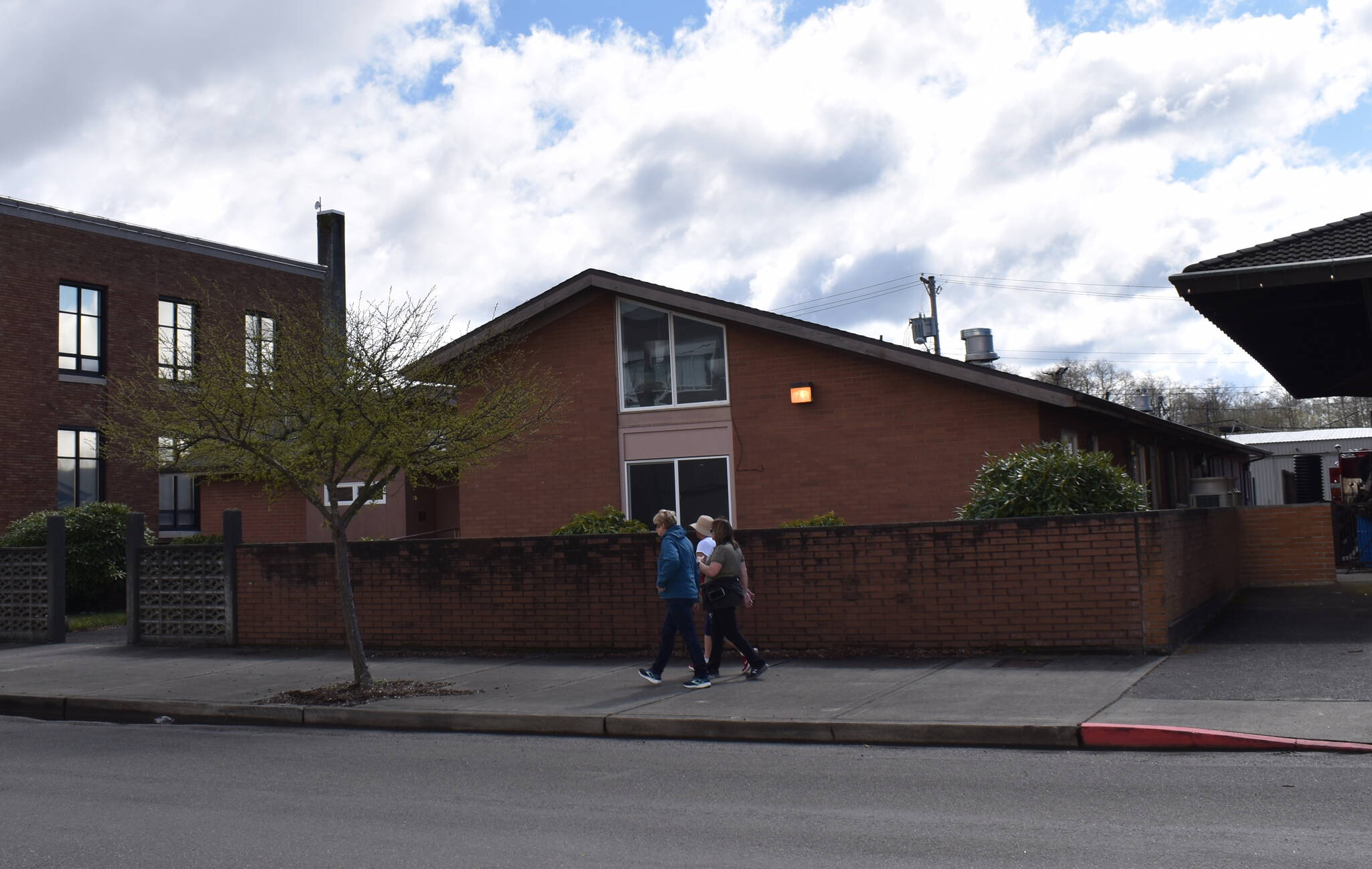A county-owned building in Hoquiam that served as a COVID quarantine facility is sitting vacant as local officials wait for federal direction on the building’s future use.
At a March 28 Grays Harbor County Board of County Commissioners meeting, county legal emergency management departments recommended commissioners “hang tight” until receiving the go-ahead from the Federal Emergency Management Agency, but didn’t have a timeline for when that might be.
Meanwhile, commissioners discussed repurposing the facility without federal approval, citing the building’s potentially-valuable use as a health services facility.
The roughly 6,000-square-foot building, which sits in between Hoquiam’s city hall and fire department, hasn’t been used for more than a year, according to Hannah Cleverly, deputy director of emergency management for Grays Harbor County. The county previously leased the building to behavioral health providers, but it was empty when the pandemic began in March 2020. Officials identified it as an optimal location for an isolation-quarantine facility, with 16 beds available for people who had tested positive or were exposed to COVID and needed a safe place to stay.
The facility already had “good bones” Cleverly said, but needed a few improvements — an air filtration system and window insulation — to comply with COVID guidelines from the Centers for Disease Control and the Washington state Department of Health.
At the same time, FEMA opened its public assistance program for the COVID disaster, allowing local governments, including Grays Harbor County, to apply for reimbursements for their response efforts.
According to Cleverly, the county last month received a $377,000 final reimbursement for building improvements from FEMA and has stopped submitting funding requests. On Monday, President Joe Biden signed a bill immediately ending the federal emergency declaration for COVID. Washington ended its own declaration last year.
“COVID brought so many unknowns,” Cleverly said. “And unfortunately, while the disease and response piece of it was the unknown then, the recovery and financial recouping is still unknown at this point.”
Since federal funds were used to make the improvements, FEMA now has a “nexus” — or a stake — in the 8th Street facility, said Gary Urbas, a coordinating officer for the Washington state Emergency Management Division. Urbas works as the middle man between local jurisdictions and FEMA to “close out” projects involved with the public assistance program.
The extent of that nexus depends on the type of project, Urbas said. In cases where FEMA provided money for resources that were later exhausted, like COVID test kits, or tents, for example, the agency’s stake in the resource is clear. However, funding that supports changes to jurisdiction-owned buildings, as in the 8th Street facility case, “it’s not as cut and dry as it would appear,” Urbas said, leaving a building that “cannot be developed because there’s terms and specific conditions that you have to leave it in.”
For 8th Street, FEMA will classify the county’s investment either as minor alterations or capital improvements, and the result of that decision will determine a future for the building. Given the relatively low investment on the federal level, Urbas guessed it would be the former.
“We didn’t change it from a small purpose building and change it into a Taj Mahal or anything like that,” Urbas said.
According to Cleverly, the 8th Street facility was the first project of its kind in the state to receive reimbursement from FEMA, putting it on an early path to repurposement. Projects elsewhere that involve much larger sums of money take longer to close because of detailed financial audits, Urbas said. Classified as a “small project” by FEMA, the 8th Street facility is a “drop in the bucket for the amount of money they’ve spent,” said Grays Harbor County Prosecuting Attorney Norma Tillotson. According to the FEMA website, the agency provided $61 billion in public assistance in response to the pandemic.
The project’s novelty means it’s unclear if FEMA would react with consequences — a potential withdrawal of the reimbursement — should the county repurpose the building before getting the go-ahead.
Toying with that idea at the March 28 meeting, County Commissioner Jill Warne said, “For the amount of $377,000, myself, I would be willing to risk it, setting aside a couple of rooms to maintain for iso-quarantine and use the rest of the facility and quit wasting the resource when it’s much needed elsewhere,” such as for mental health or substance use disorder treatment, she said.
In an interview with The Daily World, Warne said if the legal department couldn’t make a determination about future use “soon,” she planned to make a recommendation to reserve part of the facility for quarantine while transitioning the rest of the building into another use.
“It drives me crazy, it’s sitting there empty and we’re not using it at all,” Warne said.
Warne said future use of the facility will likely come from a recommendation from public health in accordance with the department’s 2023-2025 Strategic Plan, which designates $1 million toward a mental health center and $100,000 each for a crisis triage model and a “third space” community center.
But Commissioner Vickie Raines talked about the risks that come with breaking grant requirements, citing the county’s Copalis Rocks project from several years ago, when, according to Raines, the county lost $1.5 million after failing to submit certain funding documents.
“I don’t want to risk losing” the $377,000, Raines said.
Tillotson said fines from agencies can sometimes be far greater than just losing the grant amount.
“Until we know what direction FEMA is going to take in terms of holding our feet to the fire after the final reporting process is completed, it would be a concern of mine that we were jumping the gun,” Tillotson said.
Contact reporter Clayton Franke at 406-552-3917 or clayton.franke@thedailyworld.com.


